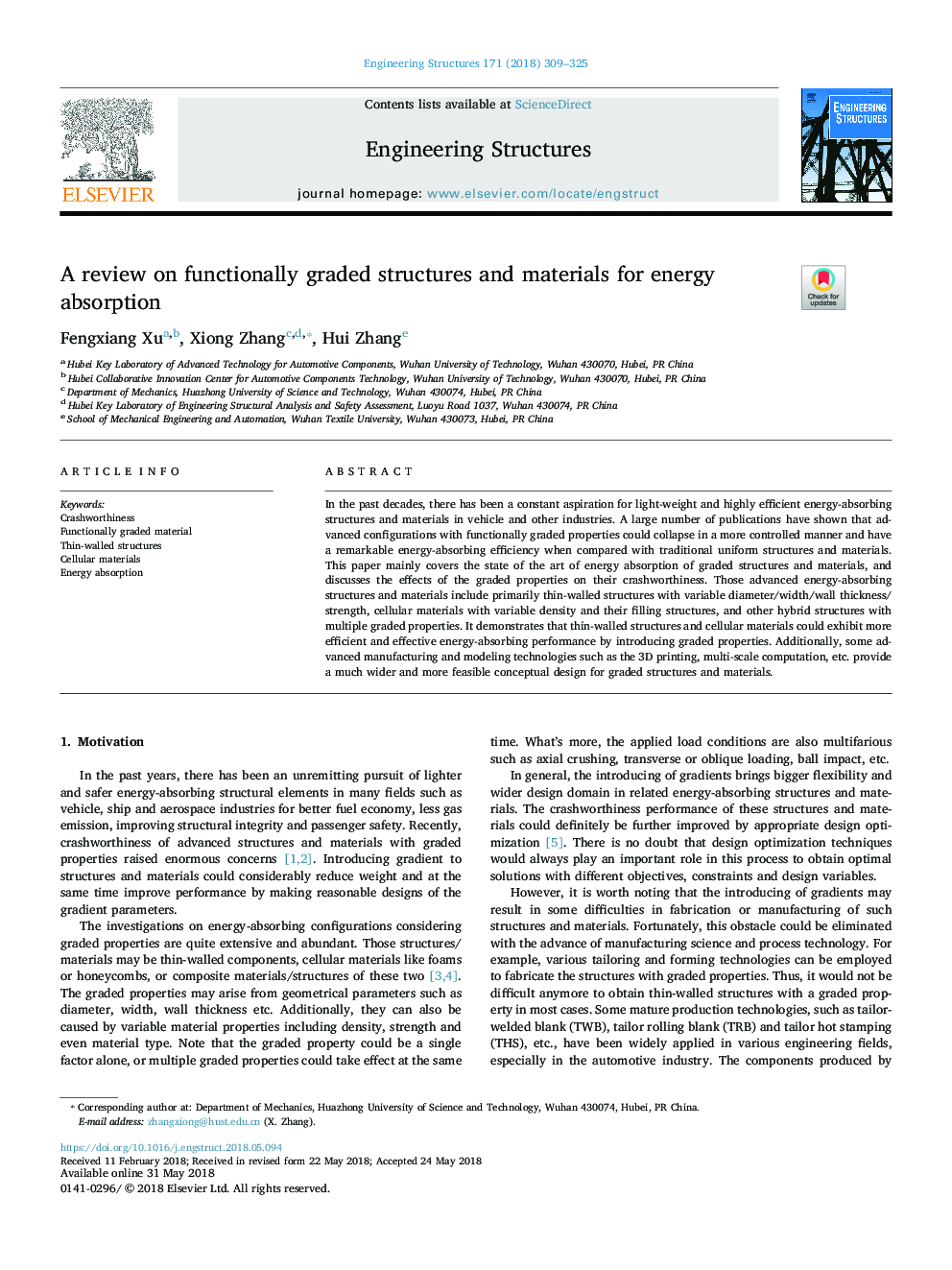| Article ID | Journal | Published Year | Pages | File Type |
|---|---|---|---|---|
| 6736207 | Engineering Structures | 2018 | 17 Pages |
Abstract
In the past decades, there has been a constant aspiration for light-weight and highly efficient energy-absorbing structures and materials in vehicle and other industries. A large number of publications have shown that advanced configurations with functionally graded properties could collapse in a more controlled manner and have a remarkable energy-absorbing efficiency when compared with traditional uniform structures and materials. This paper mainly covers the state of the art of energy absorption of graded structures and materials, and discusses the effects of the graded properties on their crashworthiness. Those advanced energy-absorbing structures and materials include primarily thin-walled structures with variable diameter/width/wall thickness/strength, cellular materials with variable density and their filling structures, and other hybrid structures with multiple graded properties. It demonstrates that thin-walled structures and cellular materials could exhibit more efficient and effective energy-absorbing performance by introducing graded properties. Additionally, some advanced manufacturing and modeling technologies such as the 3D printing, multi-scale computation, etc. provide a much wider and more feasible conceptual design for graded structures and materials.
Keywords
Related Topics
Physical Sciences and Engineering
Earth and Planetary Sciences
Geotechnical Engineering and Engineering Geology
Authors
Fengxiang Xu, Xiong Zhang, Hui Zhang,
